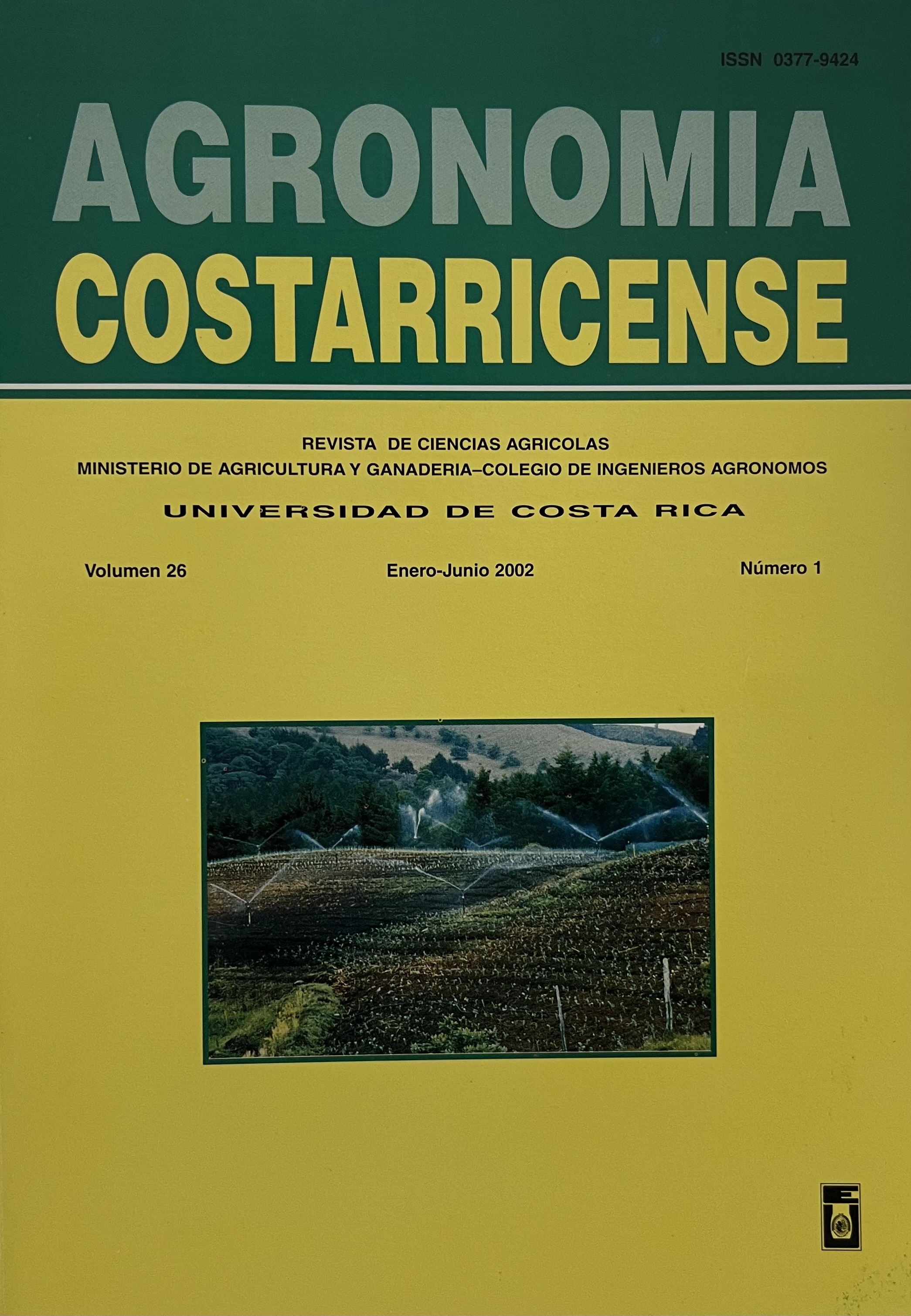Abstract
A curve of absorption or nutrient accumulation by coffee fruits was prepared for the Aquiares zone of Turrialba with the purpose of determining stages of absorption during fruit filling, and thus improving complementary nutrient supplement through foliar application. This zone has successive blooms; nevertheless, upon carring-out sequential sampling of fruit-bearing branches (marked at the time of maximum bloom) from a 2 year-old Caturra plantation of low pruning, and upon classifying thefruit type by size in each fruit-bearing branch and establishing the dominant fruit type each month, the curve of nutrient consumption by a fruit was prepared. From this it was established for each nutriment, especially the micros, the moments of maximum absorption by the fruit, and thus those most appropriate for receiving a foliar supplement. Ninety days (3 months) after peak bloom, all the elements, except K, had been consumed at 50% of total requirement. A foliar fertilization program of minor elements that wishes to effectively support the course of formation, filling and maturation of fruits, should include a supplement of Zn and B preferably at 2.5 and 3.5 months, and an additional one of only B towards the moment of maturation, 6.5 months. Late applications of Zn are not pertinent, since consumption of this element stops before this period. Other elements like Mg, N and K would be recommendable at 2.5 and 6.5 months. If the plantation has particular needs of Ca, these should be supplied before the first 3 months.
##plugins.facebook.comentarios##

This work is licensed under a Creative Commons Attribution-NonCommercial-NoDerivatives 4.0 International License.
Copyright (c) 2025 Agronomía Costarricense


